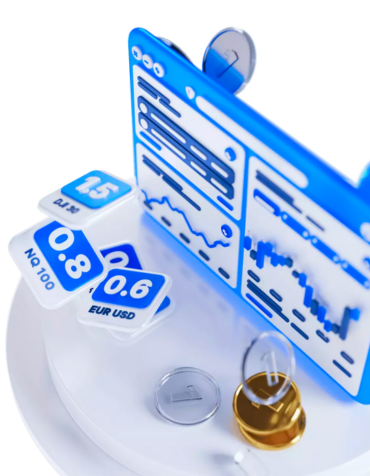We round up the best brokers that we believe offer best value for forex traders.





Trading the MADUSD forex pair involves buying or selling it in the foreign exchange (forex) market. Here are the basic steps to trade MADUSD:
To trade any forex pair, including MADUSD, you'll need to open an account with a reputable forex broker. Ensure that the broker offers access to this specific MADUSD pair.
Deposit funds into your forex trading account. The amount you deposit will determine the size of your trading positions.
Before making any trades, perform a thorough analysis of the MADUSD pair. This analysis typically involves fundamental analysis (economic data, interest rates, geopolitical events) and technical analysis (price charts, indicators) to determine your trading strategy.
Most brokers offer trading platforms that allow you to execute trades. Familiarize yourself with the platform's interface and tools.
Choose whether you want to buy (long) or sell (short) the MADUSD pair based on your analysis. Enter the trade order on your trading platform, specifying the amount (lot size) you wish to trade.
Executes the trade immediately at the current market price.
Sets a specific price at which you want your trade to be executed.
Sets a price at which your trade will be triggered if the market moves in a certain direction.
To manage risk, consider setting stop-loss orders to limit potential losses and take-profit orders to lock in profits at a certain price level.
Once your trade is executed, monitor the MADUSD pair's price movement. Keep an eye on news and events that may impact the exchange rate.
When you achieve your trading objectives, either manually close the trade or wait for your predetermined take-profit or stop-loss levels to be reached.
After closing your trade, assess the outcome. Review your trading strategy and learn from both successful and unsuccessful trades to improve your skills.
Always practice proper risk management. Never risk more than you can afford to lose, and consider using leverage cautiously if available.
For the breakout strategy, we want to look at the MADUSD chart and find key support and resistance levels. Once we identify these levels, we wait for the price to break above a significant resistance level or below a significant support level. When that happens, we can enter a long position if the price breaks above resistance or a short position if it breaks below support. It's important to set stop-loss orders below the breakout point to limit potential losses. And for taking profits, we can place orders at subsequent resistance levels for long positions or support levels for short positions.
Now let's talk about the trend following strategy. Here, our goal is to determine the prevailing trend in MADUSD by analyzing higher time frames like daily or weekly charts. We're looking for pullbacks within that overall trend - these are temporary moves where prices go against the trend but then resume their original direction. To confirm trend reversals after pullbacks, we can use technical indicators like moving averages or trendlines. If there's an upward reversal from a pullback in an uptrend, that's when we enter long positions; and vice versa for short positions. For stop-loss orders during uptrends/downtrends, they should be placed below recent swing lows/highs respectively; and profit targets can be based on previous swing highs/lows.
Lastly, let's discuss range trading strategy. This one involves identifying periods of consolidation on the MADUSD chart where prices trade within a defined range-bound market condition - basically when there's not much movement up or down. To set upper and lower boundaries of this range, you can observe previous peaks and troughs or use Bollinger Bands which help identify overbought/oversold conditions within that specific range. When price approaches lower boundaries of consolidation zones near support levels, you can enter long positions expecting price bounces back towards resistance levels within the range; alternatively near resistance levels when price approaches upper boundaries of consolidation zones, you can enter short positions. Stop-loss orders should be placed outside the range to protect against potential breakouts, and take-profit orders can be set near the opposite boundary of the range.